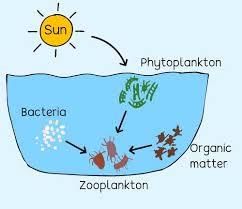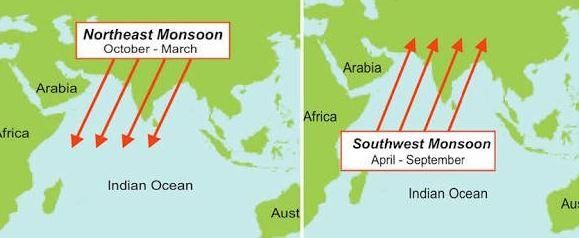UPSC Daily Current Affairs: 3rd June 2025 | Current Affairs & Hindu Analysis: Daily, Weekly & Monthly PDF Download
GS3/Economy
Asian Development Bank (ADB) Initiatives in India
Source: ET World
Why in News?
The President of the Asian Development Bank (ADB) recently announced a significant five-year initiative aimed at transforming urban infrastructure across India, with an estimated investment of $10 billion.
- The ADB was established on 19th December 1966 and serves as a multilateral development bank.
- It is the principal development finance institution for the Asia-Pacific region.
- The bank's headquarters are located in Manila, Philippines.
Additional Details
- Functions: ADB provides assistance to developing member countries, the private sector, and public-private partnerships through various means such as grants, loans, technical assistance, and equity investments aimed at promoting social and economic development.
- Focus Areas: The ADB prioritizes six key areas that align with the UN’s Sustainable Development Goals (SDGs): education, health, transport, energy, finance, and climate change.
- Membership: Open to members and associate members of the United Nations Economic Commission for Asia and the Far East, as well as other regional and non-regional developed countries. ADB has grown from 31 members in 1966 to 69 members, including 49 regional members from Asia and the Pacific.
- Governance: ADB is governed by a Board of Governors, with one representative from each member state. The Board elects 12 members to the Board of Directors.
- Voting Power: ADB employs a weighted voting system similar to the World Bank, where votes correspond to members' capital subscriptions.
- Source of Funding: ADB raises capital primarily through international bond markets, alongside member contributions and retained earnings.
In conclusion, the ADB’s commitment to investing in India’s urban infrastructure highlights its crucial role in fostering development across the Asia-Pacific region, ultimately aiming for a prosperous and sustainable future for all member countries.
GS1/History & Culture
D. Gukesh Defeats World No. 1 Magnus Carlsen
Source: TOI
Why in News?
D. Gukesh, the reigning World Chess Champion, recently made headlines by defeating world No. 1 Magnus Carlsen for the first time in a classical game during Round 6 of the Norway Chess tournament.
- D. Gukesh's victory over Magnus Carlsen marks a significant milestone in his career.
- He is recognized as one of the most talented chess prodigies of his generation.
Additional Details
- D. Gukesh: An Indian chess grandmaster born on May 29, 2006, he has made a remarkable ascent in the chess world.
- Early Start: Gukesh began playing chess at the age of seven and quickly gained recognition for his exceptional skills.
- Topmost Indian Player: In September 2023, he became India’s highest-rated chess player, ending Viswanathan Anand’s 37-year reign.
- Accomplishments:
- FIDE Master Title: Achieved in 2015 after winning the Under-9 Asian School Chess Championship.
- International Master: Became an International Master in March 2018 at the age of 11.
- Grandmaster Milestone: Became the second-youngest Grandmaster in history at 12 years and 7 months.
- World Youth Champion: Won the Under-12 World Youth Chess Championship in 2018.
- Asian Youth Success: Secured five gold medals at the 2018 Asian Youth Championships.
- Chess Olympiad 2022: Won individual gold on board one and contributed to India's team bronze medal.
- Victory Over Carlsen: Defeated Magnus Carlsen in rapid chess at the Aimchess Rapid tournament in 2022.
- Crossed 2700 Elo: Achieved this milestone in 2022, becoming the third-youngest player to do so.
- Broke Carlsen’s Record: In August 2023, crossed 2750 Elo, becoming the youngest to achieve this rating.
- Candidates Tournament: Won the 2024 Candidates Tournament, making history as the youngest winner.
- World Champion Title: On December 12, 2024, at the age of 18 years and 195 days, he defeated Ding Liren to become the youngest undisputed World Chess Champion.
- Indian Chess Legacy: Became only the second Indian after Viswanathan Anand to win the world title.
- Chess Olympiad 2024: Helped India secure team gold and won individual gold at the 45th Chess Olympiad.
- National Honour: Received the Major Dhyan Chand Khel Ratna Award, India’s highest sporting honour, in January 2025.
The recent achievements of D. Gukesh not only highlight his exceptional talent but also mark a new era in Indian chess, inspiring future generations of players.
Consider the following statements:
- I. In the finals of the 45th Chess Olympiad held in 2024, Gukesh Dommaraju became the world’s youngest winner after defeating the Russian player Ian Nepomniachtchi.
- II. Abhimanyu Mishra, an American chess player, holds the record of becoming the world’s youngest ever Grandmaster.
Which of the statements given above is/are correct?
- Options: a) I only b) II only* c) Both I and II d) Neither I nor II
GS3/Defence & Security
First-Person View Drones
Source: Indian Express
Why in News?
Recently, Ukraine has effectively utilized First-person view (FPV) drones in military operations, successfully targeting and destroying over 40 Russian aircraft.
- FPV drones are unmanned aerial vehicles equipped with artificial intelligence.
- These drones can perform advanced tasks such as surveillance and search and rescue.
- They provide a real-time perspective to the operator, enhancing operational effectiveness.
Additional Details
- Technology Behind FPV Drones: These drones rely on AI algorithms to process live video feeds, enabling them to navigate and avoid obstacles autonomously.
- Reconnaissance Drones: Before deploying FPV drones, a reconnaissance drone is sent to assess the target area, which helps in identifying specific locations that require attention.
- Range Limitations: FPV drones have a relatively short operational range of only a few kilometers, which differentiates them from their reconnaissance counterparts.
- Navigation Features:
- GPS-independent Navigation: These drones can operate without satellite reliance, making them resilient to jamming.
- SmartPilot System: This system enhances navigation by interpreting visual data to determine the drone's position.
- LiDAR Technology: LiDAR complements the SmartPilot system, improving precision in complex environments.
- Advantages: FPV drones are cost-effective and capable of deep strike operations while maintaining a low profile.
- Challenges: A significant challenge is the limited situational awareness of the operator, as they cannot see the drone's surroundings, which can lead to disorientation. A visual observer may be required for assistance.
- Non-Military Uses: FPV drones are also employed in filming and various non-defense applications.
In summary, FPV drones represent a significant advancement in unmanned aerial technology, demonstrating their utility in both military and civilian domains.
GS3/Environment
Phytoplankton: Their Role and Ecological Significance
Source: Nature
 Why in News?
Why in News?
Recent research from various U.S. institutions indicates that iron released through human activities boosts spring phytoplankton blooms and accelerates nutrient consumption in marine ecosystems.
- Phytoplankton are microscopic plants crucial to the marine food web.
- They require sunlight and inorganic nutrients to thrive.
- Phytoplankton can contribute to harmful algal blooms when nutrient levels are excessively high.
- They are responsible for producing around 50% of Earth's oxygen.
Additional Details
- Phytoplankton: These organisms, also known as microalgae, contain chlorophyll and float in the upper ocean layers where sunlight is available. They convert inorganic nutrients into essential biomolecules like proteins and carbohydrates.
- Main Classes: The two primary classes are dinoflagellates and diatoms. Dinoflagellates move using whip-like tails called flagella, while diatoms rely on ocean currents due to their rigid shell structure.
- Ecological Role: Phytoplankton are a vital food source for marine creatures such as shrimp, snails, and jellyfish, maintaining the balance of the marine ecosystem.
- Harmful Algal Blooms: An overabundance of nutrients can lead to excessive phytoplankton growth, resulting in harmful algal blooms (HABs) that produce toxic compounds harmful to fish, shellfish, and humans.
Phytoplankton play an essential role in oceanic ecosystems and the global carbon cycle, highlighting their importance in maintaining ecological balance and supporting marine life.
GS2/International Relations
Strengthening the U.S.-India Subsea Cable Agenda
Source: The Hindu
 Why in News?
Why in News?
In the context of rising geopolitical tensions and increasing reliance on digital infrastructure, the collaboration between India and the United States has become essential, particularly concerning the development of resilient subsea cables. These undersea systems are vital for global internet traffic, and enhancing their security is crucial for both nations as well as for global digital infrastructure.
- The U.S.-India partnership is evolving beyond trade, focusing on technological collaboration in subsea cable infrastructure.
- Subsea cables are critical, carrying over 95% of global internet traffic, and their security is a priority amid geopolitical challenges.
- India's geostrategic position offers unique advantages for subsea infrastructure development, despite current limitations.
- Regulatory hurdles and investment barriers need to be addressed for effective infrastructure development.
Additional Details
- Subsea Cables: These cables serve as the backbone of global internet connectivity, linking directly to users and data centers that support cloud services. Their security and resilience are essential for maintaining global digital integrity.
- India's Unique Position: With an extensive 11,098-kilometre coastline, India currently has only 17 operational subsea cables, which is significantly fewer than other regional players like Singapore. This concentration poses risks, particularly as many cables converge in Mumbai.
- Challenges: Key issues include complex regulatory frameworks, reliance on foreign repair vessels, and concentrated cable landing stations. Addressing these through streamlined processes and local capabilities is crucial.
- Investment Needs: To attract private sector participation, the government should create favorable investment conditions, including clear policy frameworks and financial incentives for subsea infrastructure projects.
- Cybersecurity Concerns: As subsea cables carry sensitive data, ensuring their security against potential threats is vital, necessitating collaborative approaches to cybersecurity protocols between India and the U.S.
In conclusion, enhancing subsea cable infrastructure is a foundational step in strengthening the India-U.S. strategic partnership. As digital resilience becomes intertwined with national security, it is imperative to take prompt action on regulatory reform and infrastructure investment to safeguard digital flows and advance the interests of both nations.
GS3/Science and Technology
SHUKR Gene in Flowering Plants
Source: The Hindu
Why in News?
The emergence of flowering plants approximately 130 million years ago has intrigued scientists, including Charles Darwin, who referred to it as an "abominable mystery." Recent research from CSIR-CCMB, Hyderabad, has identified the SHUKR gene, which plays a crucial role in pollen development within these plants.
- The SHUKR gene is essential for pollen formation in flowering plants.
- This gene is linked to the plant's sporophyte phase, contributing to healthy reproduction.
- Loss of SHUKR can result in poor pollen production and reproductive failure.
- SHUKR interacts with F-box genes, facilitating the replacement of old proteins to promote pollen growth.
- It has an adaptive advantage, evolving quickly to help plants withstand extreme conditions.
Additional Details
- SHUKR Gene: This gene was first identified in Arabidopsis thaliana and is vital for the production of viable pollen.
- Function in the Plant Life Cycle: Active during the sporophyte phase, SHUKR ensures the development of healthy pollen.
- Effect of Gene Loss: Absence or malfunction of SHUKR leads to the inability of plants to produce effective pollen, resulting in diminished reproductive success.
- Adaptive Advantage: The rapid evolution of SHUKR and its related F-box genes enables plants to adjust to environmental stresses such as heat, cold, or drought.
- Evolutionary Origin: This gene's presence can be traced back to 125 million years ago, correlating with the rise of eudicots, a group that encompasses a significant majority of flowering plants today.
- Significance: Understanding SHUKR could lead to advancements in developing climate-resilient crops, especially important as climate change poses risks to pollen viability.
The discovery of the SHUKR gene provides insight into how flowering plants evolved rapidly and adapted to their environments, potentially resolving Darwin's longstanding puzzle regarding their sudden diversification.
Back2Basics: Darwin’s “Abominable Mystery”
- Darwin’s Confusion: He was perplexed by the swift emergence and diversification of flowering plants, coining the term "abominable mystery."
- Mismatch with Evolutionary Pace: Contrary to the gradual evolution of species, flowering plants exhibited rapid diversification.
- Genetic Explanation: The SHUKR gene may illuminate how flowering plants developed the means to adapt and reproduce more efficiently.
- New Insight: This research offers a genetic perspective on the rapid evolution of flowering plants, addressing a pivotal question in evolutionary biology.
In conclusion, the identification of the SHUKR gene not only enhances our understanding of plant reproduction but also opens pathways for developing crops that can thrive in changing climate conditions.
GS3/Environment
Heatwaves and Their Toll on India’s Workforce Productivity
Source: New Indian Express
Why in News?
In 2025, India faced an early and severe heatwave, with temperatures starting to rise as early as late February. Although the early monsoon provided some relief, the impact of extreme heat on the economy and human health remains profound. The International Labour Organization (ILO) reports that over 70% of the global workforce is at risk of heat exposure, with India incurring an estimated loss of $100 billion due to productivity declines linked to heat. Informal workers, including farmers, construction laborers, street vendors, and delivery personnel, are especially susceptible to these conditions. Agriculture also suffers significantly; studies indicate that a 1°C increase in temperature can lead to a 5.2% decrease in wheat yields.
- Heatwaves in India typically occur from March to June, peaking in May.
- A report by the Council on Energy, Environment and Water (CEEW) indicates that 57% of Indian districts are at high or very high heat risk.
- States such as Delhi, Maharashtra, Gujarat, Rajasthan, and Tamil Nadu are particularly vulnerable to heat extremes.
Additional Details
- Urban Heat Island Effect: Urbanization exacerbates heatwave effects, as cities retain more heat, creating warmer nights and reducing relief. This is especially problematic in Tier-II and Tier-III cities, affecting sleep and recovery from daytime heat.
- According to a 2022 World Bank report, approximately 75% of India's workforce (around 380 million people) is exposed to heat-intensive jobs, with projections of 34 million job losses due to heat stress by 2030.
- Informal sector workers see a significant drop in earnings during heatwaves, with data from Delhi showing a 40% decline.
Factory and blue-collar workers also face reduced productivity; a 2021 study highlighted that each 1°C increase in temperature could decrease manufacturing output by 2%. Rising absenteeism and declining efficiency are prevalent during hot days, prompting employers to consider investments in heat-protection measures.
In rural areas, where summer is usually a lean season for farming, many individuals switch to non-farming jobs like construction, increasing their heat exposure. Livestock are also vulnerable to heat stress, particularly when temperature and humidity exceed certain thresholds, and small farmers often struggle to enforce animal welfare guidelines.
Heatwaves can be exacerbated by concurrent climate events like droughts. Unseasonably high temperatures can damage crops and affect productivity even outside typical heatwave periods. In response, the Central and State governments are implementing measures to address these challenges.
The National Disaster Management Authority (NDMA) has issued comprehensive guidelines for worker protection, emphasizing education, regulated working hours, access to water, medical aid, and appropriate clothing. These guidelines serve as templates for localized heatwave action plans, which many states and cities are beginning to adopt.
- Localized Heat Action Plans:Many regions have developed localized plans, including:
- Short-term solutions: Establishing water stations and shaded public shelters.
- Long-term strategies: Urban greening and expanding water bodies.
For example, Chennai has integrated urban heat island data into its city master plan. However, most current heatwave preparedness focuses on urban areas, leaving rural regions with significant risks due to inadequate healthcare infrastructure, poor housing quality, and limited access to essential resources.
To address immediate needs during heatwaves, states can utilize the State Disaster Management Fund, but long-term investments and strategic planning are crucial for building resilient infrastructure and executing effective heat action plans.
Finally, to protect the incomes of informal workers, mechanisms such as heat insurance are being explored, where workers pay small premiums and receive compensation if a heatwave prevents them from working, though implementation challenges remain.
GS1/History & Culture
Raigad Fort
Source: TOI
Why in News?
The recent excavation at Raigad Fort, the historic capital of Chhatrapati Shivaji Maharaj, by the Archaeological Survey of India in collaboration with the Raigad Development Authority has uncovered a significant artifact—a 'yantraraj' (astrolabe). This discovery highlights the fort's historical importance.
- Raigad Fort is located in the Raigad district of Maharashtra, standing at an elevation of 2,700 feet (820 meters) above its base.
- It is situated in the Sahyadri mountain ranges, known as the Western Ghats, and is characterized as an isolated massif.
- The fort has a strategic layout with multiple fortifications and overlooks the artificial Ganga Sagar Lake.
- Raigad Fort was declared the capital of the Maratha Empire in 1674 AD after renovation by Chhatrapati Shivaji Maharaj.
Additional Details
- Historical Significance: Raigad Fort was seized by Chhatrapati Shivaji Maharaj in 1656 and became a crucial stronghold for the Maratha Empire.
- Architectural Features: The fort is renowned for its defensive capabilities, featuring bastions, gateways, and a famous tower known as “Hirkani Buruj.”
- The fort faced an attack by the British East India Company in 1765 and was ultimately destroyed by them on May 9, 1818.
Raigad Fort remains a symbol of Maratha pride and a significant historical site, reflecting the rich cultural heritage of India.
GS3/Environment
Caspian Gull Sighted in Kerala
Source: The Hindu
 Why in News?
Why in News?
A notable sighting of the Caspian Gull (Larus cachinnans), a rare migratory bird, has been reported for the first time in Kerala by an ornithologist based in Kozhikode. This sighting is significant as it marks the presence of one of the rarest gull species in India.
- The Caspian Gull is a large, monotypic gull characterized by its white head.
- This species typically nests near water bodies on flat, low-lying ground.
- It has a complex migratory pattern, primarily found in Central Asia and parts of northwestern India during winter.
Additional Details
- Habitat: The Caspian Gull usually nests on flat, low-lying areas close to water. During breeding season, it prefers locations such as lakes surrounded by reedbeds, particularly in steppe and semi-desert regions of Central Asia.
- Diet: Its diet mainly consists of fish and various invertebrates, including insects and mollusks. Identifying this gull can be challenging as it closely resembles the Steppe Gull.
- Migration: Caspian Gulls migrate from the Black Sea to the Caspian Sea, proceeding to southern and eastern Kazakhstan, as well as western China. They typically winter in regions ranging from the eastern Mediterranean to the Persian Gulf, with increasing numbers venturing into Europe, including countries like Sweden, Norway, and Denmark.
- Conservation Status: According to the IUCN, the Caspian Gull is classified as Least Concern.
This sighting at Kappad beach highlights the importance of monitoring migratory patterns and conservation efforts for rare species like the Caspian Gull.
GS2/Governance
National Centre for Disease Informatics and Research (NCDIR) Findings on Diabetes and Hypertension Care
Source: The Hindu
 Why in News?
Why in News?
A recent study conducted by the National Centre for Disease Informatics and Research (ICMR-NCDIR) in Bengaluru has revealed that Public Primary Health Centres (PHCs) are more effectively prepared to manage diabetes and hypertension compared to Sub-Centres, Community Health Centres (CHCs), and Sub-District Hospitals.
- PHCs demonstrate better preparedness for diabetes and hypertension care.
- The study highlights significant discrepancies in healthcare readiness across different health facilities.
Additional Details
- About NCDIR: It is a permanent institute under the Indian Council of Medical Research (ICMR), functioning as an autonomous organization within the Department of Health Research, Ministry of Health & Family Welfare, Government of India.
- Location: Bengaluru, Karnataka.
- Objective: The center aims to develop a national research database on diseases such as cancer, diabetes, cardiovascular diseases (CVD), and stroke through advanced electronic information technology.
- Collaboration: NCDIR collaborates with the Ministry of Health and various governmental and non-governmental institutions to ensure comprehensive data collection and support for health programs.
- Technological Integration: The center integrates modern communication technologies to innovate health informatics and develop software for data management and analysis.
The findings stress the need for enhanced operational capacity in health facilities to effectively manage chronic conditions like diabetes and hypertension. Continued support and improvements are essential for achieving better health outcomes in the community.
GS3/Environment
Monsoon Woes: The Impact of the Southwest and Northeast Monsoon
Source: Mint
 Why in News?
Why in News?
In 2025, the Southwest Monsoon, crucial for India's agricultural economy, resulted in severe and destructive rainfall, particularly affecting the northeastern states instead of merely signaling the start of the farming season.
- The northeastern region is especially susceptible to disasters related to the monsoon.
- Geographical challenges and climatic conditions exacerbate the impact of monsoon rains.
Additional Details
- Geographical Terrain and River Systems: The Northeast features a complex topography, with steep hills and fast-flowing rivers such as the Brahmaputra and Barak. These rivers often overflow during the monsoon, leading to floods and erosion. For example, in Assam, over 10 major rivers surpassed danger levels in June 2025, affecting more than 3 lakh people across 19 districts.
- High and Prolonged Rainfall: This region experiences some of the highest average monsoon rainfalls in India. Even a "below normal" monsoon can result in significant damage. For instance, despite the IMD predicting lower-than-normal rainfall, Tripura and Sikkim faced flash floods and landslides during May–June 2025.
- Dual Monsoon Exposure and Fragile Ecology: The region is affected by both the Southwest Monsoon (June–September) and a retreating monsoon (October–December), increasing vulnerability to disasters. The fragile ecosystem, characterized by deforestation and slope instability, worsens these risks. In early 2025, North Sikkim saw 1,500 tourists marooned and arterial roads blocked due to incessant rain.
What is the Dual Monsoon Pattern?
The dual monsoon pattern refers to two distinct phases of monsoon that impact the northeastern states of India:
- Southwest Monsoon (June to September): This is the primary monsoon season for most of India, where the Bay of Bengal branch brings heavy rainfall to states like Assam, Meghalaya, and Arunachal Pradesh.
- Retreating/Post-Monsoon (October to December): This secondary phase brings additional rainfall, especially to Nagaland, Manipur, Mizoram, and Tripura (NMMT region), often accompanied by cyclonic storms from the Bay of Bengal.
How does the dual monsoon pattern affect the disaster preparedness of northeastern States?
- Extended Vulnerability Period: The overlap of the two monsoon phases leads to an extended rainy season, requiring prolonged preparedness. For example, in 2023, flash floods affected parts of the region in both July and November.
- Recurring Strain on Resources: The back-to-back monsoon cycles create continuous pressure on relief infrastructure, emergency services, and budgets, often without sufficient recovery time. For instance, flood shelters used during June floods were reactivated during October rains, delaying repairs.
- Challenges in Long-term Planning: The dual monsoon complicates infrastructure repair, agricultural recovery, and resettlement efforts, as damages may recur within months. For example, roads repaired after July landslides were washed away again during October rains in 2022.
Why has infrastructure development lagged in the northeastern States compared to the rest of India?
- Challenging Geographical Terrain: The region’s mountainous landscapes, dense forests, and seismic zones make construction challenging and costly. Frequent landslides and narrow mountain roads delay road-widening and highway projects.
- Security and Strategic Concerns: The international borders with China, Myanmar, and Bangladesh, coupled with historical insurgency issues, have led to delays due to security concerns. For example, the construction of the India-Myanmar-Thailand Trilateral Highway has faced repeated delays due to local unrest.
- Low Political and Economic Prioritisation: The Northeast has received less investment due to lower population density, limited industrial base, and less political influence compared to other regions. States like Arunachal Pradesh still have limited railway connectivity, unlike the rapid expansion seen in western and southern India.
What are the steps taken by the Indian government?
- Strengthened Disaster Response and Early Warnings: The government has deployed NDRF units and enhanced IMD’s region-specific alerts for floods and landslides.
- Infrastructure Development in Vulnerable Areas: Initiatives like NESIDS support critical infrastructure, including flood protection embankments and all-weather roads in remote regions.
- Integration into National Disaster Management Frameworks: The NDMA conducts capacity building, mock drills, and implements region-specific guidelines for urban flooding and landslide risk in cities like Gangtok and Guwahati.
What long-term measures are needed to ensure sustainable disaster management in the Northeast? (Way forward)
- Region-Specific Infrastructure Planning and Investment: Develop climate-resilient infrastructure suited to the region’s conditions, such as landslide-resistant roads and flood-resistant housing. The installation of a real-time flood monitoring system in the Brahmaputra basin has improved early evacuation in Assam.
- Integrated Inter-State and Central Coordination Mechanism: Establish a permanent regional disaster coordination body with participation from all Northeast states and the Centre to plan and respond collectively to disasters. A joint task force involving Assam, Arunachal Pradesh, and Meghalaya could improve flood response across shared river systems.
The Bay of Bengal branch of the monsoon reaches the northeastern states first, often resulting in significant rainfall even in years of lower-than-normal precipitation, making the region naturally more susceptible to flooding and related issues.
GS1/Indian Society
Kheer Bhawani Festival
Source: The Hindu
Why in News?
The recent terror attack in Pahalgam has resulted in a decreased turnout for the annual Jyestha Ashtami festival held at the Kheer Bhawani temple in Kashmir.
- The Kheer Bhawani Festival, also known as Mela Kheer Bhawani, is celebrated annually by the Kashmiri Pandit community.
- It is located at the Kheer Bhawani Temple in Tulmulla village, Ganderbal district, Jammu and Kashmir.
- The temple is dedicated to Goddess Ragnya Devi, a significant deity in the Kashmiri Hindu tradition.
- Devotees offer kheer (a rice and milk pudding) as a sacred offering at this temple, which is built over a natural spring.
- This festival represents the largest Hindu religious gathering in the Kashmir Valley after the Amarnath Yatra.
Additional Details
- Beliefs about Water Color:Devotees believe that the color of the spring changes based on the region's conditions:
- Light colors signify good times.
- Black water serves as a warning sign; notably, it turned black in 1990, prior to the Kashmiri Pandit Massacre.
- Historical Legacy: The temple structure was constructed by Maharaja Pratap Singh and later renovated by Maharaja Hari Singh in the early 1900s.
- Ancient Mentions: The site is referenced in historical texts such as Kalhana’s Rajtarangini, Bhrigu Samhita, and Abu’l-Fazl’s Ain-i-Akbari, which also notes flooding in Tula Mula.
- Cultural Importance: The temple serves as a symbol of faith and identity for Kashmiri Pandits, particularly those who have been displaced.
- Communal Harmony: Local Muslim communities play a role in organizing the festival, which reflects communal unity and harmony.
- Spiritual Symbolism: The temple's spring, known as Syandh, holds significant spiritual meaning and is not affiliated with the Sindhu (Indus) River.
This festival not only showcases the rich cultural heritage of the Kashmiri Pandits but also emphasizes the importance of communal harmony in the region.
Consider the following pairs:
Tradition – State
- 1. Chapchar Kut festival — Mizoram
- 2. Khongjom Parba ballad — Manipur
- 3. Thong-To dance — Sikkim
Which of the pairs given above is/are correct?
- Options: (a) 1 only (b) 1 and 2* (c) 3 only (d) 2 and 3
|
43 videos|5366 docs|1135 tests
|
FAQs on UPSC Daily Current Affairs: 3rd June 2025 - Current Affairs & Hindu Analysis: Daily, Weekly & Monthly
| 1. What are some key initiatives of the Asian Development Bank (ADB) in India? |  |
| 2. How has the discovery of the SHUKR gene impacted agricultural practices? |  |
| 3. What ecological significance do phytoplankton have? |  |
| 4. What are the findings of the National Centre for Disease Informatics and Research (NCDIR) regarding diabetes and hypertension care in India? |  |
| 5. How do heatwaves affect workforce productivity in India? |  |
















